
Santa Ana: The Heart of El Salvador's Coffee Country
Santa Ana, El Salvador: A blend of stunning architecture, volcanic landscapes, and rich coffee culture, perfect for history buffs and nature lovers alike.
Nestled in the heart of El Salvador, Santa Ana offers a unique blend of natural beauty, historical richness, and vibrant culture. Known for its stunning architecture, Santa Ana is home to one of the most beautiful cathedrals in Central America, the Santa Ana Cathedral. Its neo-Gothic design and intricate details make it a must-visit landmark. Nearby, the Santa Ana Theatre, built in the early 20th century, showcases classic European style and continues to be a cultural hub for performances and events. For nature enthusiasts, Santa Ana is the gateway to Cerro Verde National Park. The park offers breathtaking views of three volcanoes: Izalco, Cerro Verde, and Santa Ana. The Santa Ana Volcano, also known as Ilamatepec, is the highest volcano in the country and offers a challenging but rewarding hike with panoramic views of the crater lake and surrounding landscape. Santa Ana's rich coffee culture is another highlight. Visitors can tour local coffee plantations to learn about the coffee-making process, from bean to cup. The region's fertile volcanic soil and ideal climate produce some of the finest coffee in the world. Don't miss the chance to sip a freshly brewed cup while enjoying the serene countryside views. The city's bustling markets and plazas are perfect for experiencing local life. The Central Market is a labyrinth of stalls selling everything from fresh produce to handmade crafts. It's an excellent place to sample Salvadoran cuisine, including pupusas, the country's iconic stuffed tortillas. The vibrant atmosphere, friendly locals, and delicious food make it an unforgettable experience.
Local tips in Santa Ana
- Visit the Santa Ana Cathedral early in the morning to avoid the crowds and enjoy the serene atmosphere.
- Wear comfortable hiking shoes for the Santa Ana Volcano hike and bring plenty of water.
- Take a guided tour of a coffee plantation to fully appreciate the local coffee culture.
- Explore the Central Market for authentic souvenirs and to taste traditional Salvadoran dishes.
- Check the local event schedule at the Santa Ana Theatre for a chance to catch a live performance.
Neighbourhoods in Santa Ana
Santa Ana: The Heart of El Salvador's Coffee Country
Nestled in the heart of El Salvador, Santa Ana offers a unique blend of natural beauty, historical richness, and vibrant culture. Known for its stunning architecture, Santa Ana is home to one of the most beautiful cathedrals in Central America, the Santa Ana Cathedral. Its neo-Gothic design and intricate details make it a must-visit landmark. Nearby, the Santa Ana Theatre, built in the early 20th century, showcases classic European style and continues to be a cultural hub for performances and events. For nature enthusiasts, Santa Ana is the gateway to Cerro Verde National Park. The park offers breathtaking views of three volcanoes: Izalco, Cerro Verde, and Santa Ana. The Santa Ana Volcano, also known as Ilamatepec, is the highest volcano in the country and offers a challenging but rewarding hike with panoramic views of the crater lake and surrounding landscape. Santa Ana's rich coffee culture is another highlight. Visitors can tour local coffee plantations to learn about the coffee-making process, from bean to cup. The region's fertile volcanic soil and ideal climate produce some of the finest coffee in the world. Don't miss the chance to sip a freshly brewed cup while enjoying the serene countryside views. The city's bustling markets and plazas are perfect for experiencing local life. The Central Market is a labyrinth of stalls selling everything from fresh produce to handmade crafts. It's an excellent place to sample Salvadoran cuisine, including pupusas, the country's iconic stuffed tortillas. The vibrant atmosphere, friendly locals, and delicious food make it an unforgettable experience.
When is the best time to go to Santa Ana?
Iconic landmarks you can’t miss
Parque Libertad
Explore Parque Libertad, Santa Ana's serene city park, where history, culture, and nature blend beautifully for an unforgettable experience.

Tazumal Archaeological Park
Explore Tazumal Archaeological Park, a historical treasure in Chalchuapa showcasing ancient Mayan ruins and vibrant culture amidst stunning natural beauty.

Catedral de Nuestra Señora Santa Ana
Discover the breathtaking beauty and historical significance of Catedral de Nuestra Señora Santa Ana, a must-visit landmark in Santa Ana, El Salvador.

Parque Arqueológico San Andrés
Discover the ancient wonders of Parque Arqueológico San Andrés, a historical site revealing the rich heritage of the Maya civilization in El Salvador.

Casa Blanca Archaeological Site
Discover the rich history and stunning ruins of Casa Blanca Archaeological Site in Chalchuapa, El Salvador, a gem for history lovers and adventure seekers.

Santa Ana Volcano
Discover the breathtaking landscapes and rich biodiversity of Santa Ana Volcano, the highest peak in El Salvador, and an adventurer's paradise.
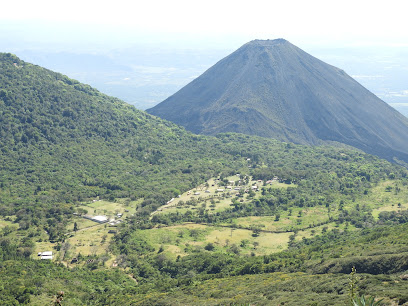
Remfort Hotel
Discover comfort and local charm at Remfort Hotel, your ideal base for exploring the vibrant culture of Santa Ana, El Salvador.

Iglesia El calvario
Discover the architectural beauty and spiritual ambiance of Iglesia El Calvario, a must-visit Catholic church in Santa Ana, El Salvador.

Pool House: Santa Ana Hostel
Experience the heart of Santa Ana at Pool House Hostel, a vibrant youth hostel that fosters connections and adventure in El Salvador.

Old Art School
Explore the Old Art School in Santa Ana, a captivating historical landmark that showcases the rich cultural heritage and artistic spirit of the region.

Finca La Esperanza Coffee Tour
Experience the art of coffee cultivation at Finca La Esperanza, a must-visit tour in Santa Ana, El Salvador, perfect for coffee lovers and tourists.
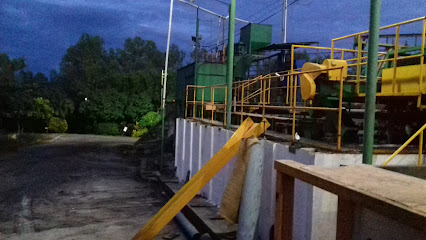
Castillo Embrujado- Necrotour Santaneco
Explore the haunted corridors of Castillo Embrujado in Santa Ana, where history intertwines with eerie folklore for an unforgettable necrotour adventure.

Hacienda El Gavilán
Experience the thrill of adventure at Hacienda El Gavilán, where paintball excitement meets delicious dining in Santa Ana.

Monumento Nuestra Señora Santa Ana
Experience the cultural richness of Santa Ana at the Monumento Nuestra Señora Santa Ana, a historic landmark reflecting Salvadoran heritage.

Ex casa de José Pedro Escalón
Explore Ex Casa de José Pedro Escalón, a historical gem in Santa Ana, El Salvador, showcasing rich heritage and stunning architecture.

Unmissable attractions to see
Parque Cuscatlán
Discover the lush landscapes and cultural heritage at Parque Cuscatlán, San Salvador's vibrant urban park and a must-visit for every traveler.

Plan de la Laguna Botanical Garden
Discover the tranquility of Plan de la Laguna Botanical Garden, where vibrant flora meets serene landscapes in Antiguo Cuscatlán.

Plan de la Laguna Botanical Garden
Explore the lush landscapes of Plan de la Laguna Botanical Garden, a serene escape into El Salvador's diverse plant life and natural beauty.

Morazan Plaza
Discover Morazan Plaza in San Salvador, a vibrant city park blending culture, history, and relaxation for an unforgettable travel experience.

Parque Nacional Cerro Verde
Explore the breathtaking landscapes of Parque Nacional Cerro Verde, a national park in El Salvador renowned for its stunning views and diverse wildlife.

Parque Nacional El Boquerón
Explore Parque Nacional El Boquerón, a stunning national park in El Salvador featuring lush trails, breathtaking views, and rich biodiversity.

Parque Libertad
Experience the beauty and culture of Parque Libertad in Santa Ana, a perfect blend of nature and culinary delights in El Salvador.

Parque Arqueológico Tazumal
Explore the ancient marvels of Parque Arqueológico Tazumal in Chalchuapa, a top destination for history lovers and cultural explorers.
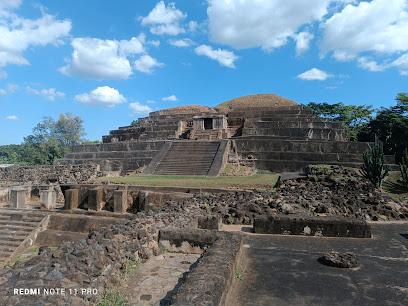
Puerta del Diablo
Discover the breathtaking beauty of Puerta del Diablo in Panchimalco, a natural park filled with stunning views and tranquil hiking trails.

Tin Marin, Children's Museum
Explore Tin Marin Children's Museum in San Salvador – a fantastic destination for family fun and interactive learning experiences for children of all ages.

Catedral de Nuestra Señora Santa Ana
Experience the grandeur of the Catedral de Nuestra Señora Santa Ana, a neo-Gothic masterpiece and a cultural gem in the heart of Santa Ana, El Salvador.

Sunset Park
Discover the thrill of Sunset Park in La Libertad, where adventure meets breathtaking ocean views in an unforgettable amusement experience.
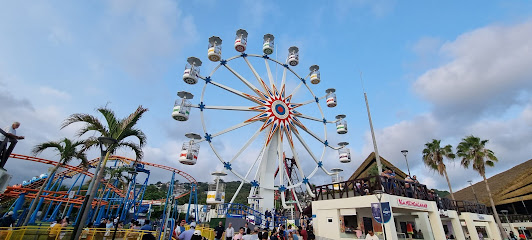
Museum of Art of El Salvador
Explore the vibrant art and cultural heritage of El Salvador at the Museum of Art of El Salvador, a must-visit destination for art lovers.

Parque Nacional Naciones Unidas
Discover the stunning beauty and rich biodiversity of Parque Nacional Naciones Unidas in Villa Nueva, Guatemala - a true nature lover's paradise.

Ecoparque El Espino
Discover the beauty of nature at Ecoparque El Espino, an ecological park in El Salvador perfect for families, nature lovers, and outdoor adventures.

Essential places to dine
Simmer Down
Experience the authentic taste of Italy at Simmer Down in Santa Ana - where every pizza tells a story.

Inna Jammin
Experience authentic Salvadoran flavors at Inna Jammin in Santa Ana – where every dish tells a story.

La Pampa Restaurant
Experience authentic Argentinian cuisine at La Pampa Restaurant in Santa Ana – where savory steaks meet vibrant culture.

Sopón Gallina India El Palmar
Discover authentic Salvadoran cuisine at Sopón Gallina India El Palmar in Santa Ana – where every dish tells a story.
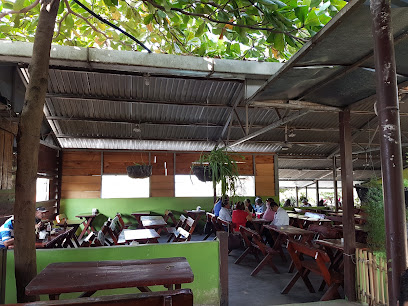
Lover's Steak House
Discover culinary excellence at Lover's Steak House in Santa Ana - where exceptional steaks meet inviting ambiance.

Restaurante Rincon Tipico de El Sopón
Experience authentic Salvadoran cuisine at Restaurante Rincon Tipico de El Sopón in Santa Ana - where tradition meets flavor.

Artisant
Discover Artisant in Santa Ana: A vibrant restaurant blending local flavors with contemporary cuisine for an unforgettable dining experience.

La Taberna del Capitán
Experience the vibrant flavors of seafood at La Taberna del Capitán in Santa Ana - a must-visit for food lovers exploring El Salvador.

Atakado
Experience the vibrant flavors of authentic Mexican cuisine at Atakado in Santa Ana - a must-visit for food lovers.
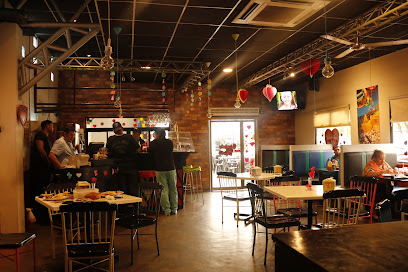
Café Tejas
Discover Café Tejas: A vibrant fusion of Salvadoran and Canadian flavors complemented by live music in the heart of Santa Ana.

Expresión Cultural
Savor authentic Salvadoran flavors at Expresión Cultural - A culinary journey through El Salvador's rich heritage awaits you.

Restaurante Mar y Tierra
Experience the culinary delights of El Salvador at Restaurante Mar y Tierra, where seafood meets tradition in an inviting atmosphere.

Le Mariské Santa Ana
Savor the freshest seafood delights at Le Mariské Santa Ana, where every dish tells a story of coastal flavors and culinary excellence.

EL PATIO.Restaurant.&.Events
Experience the essence of Salvadoran cuisine at El Patio Restaurant & Events in Santa Ana - where every meal is a celebration.

Quattro Estaciones
Discover unique Salvadoran cuisine at Quattro Estaciones in Santa Ana - where every dish tells a story of freshness and flavor.

Markets, malls and hidden boutiques
Imperio USA Santa Ana
Explore sustainable fashion and unique treasures at Imperio USA Santa Ana, a vibrant used clothing store in the heart of El Salvador.

Premium Center
Explore Premium Center in Santa Ana for unique used clothing treasures that blend style and sustainability in a charming thrift store environment.

MEGA MODA-Santa Ana
Explore MEGA MODA in Santa Ana for unique gifts, cosmetics, home goods, and more, perfect for capturing your travel memories.

Jowike Store
Discover the vibrant shopping experience at Jowike Store in Santa Ana, where local culture meets modern retail in a lively atmosphere.

El Puntero - Librería • Papelería • Regalos
Discover El Puntero in Santa Ana, a charming gift shop and bookstore offering unique gifts, local art, and a delightful selection of books and stationery.

4Seasons Santa Ana
Explore a stylish wardrobe at 4Seasons Santa Ana, a must-visit clothing store featuring local designs and trendy fashion staples.

Subliland El Salvador
Explore Subliland El Salvador, a captivating gift shop in Santa Ana, showcasing unique local crafts and souvenirs that embody Salvadoran artistry.

Star Shopping • Santa Ana 2
Uncover unique vintage clothing treasures at Star Shopping in Santa Ana, a must-visit destination for sustainable fashion enthusiasts.

Gloire - Tienda de Moda y Estilo
Explore Gloire - Tienda de Moda y Estilo in Santa Ana, where unique fashion meets local flair for an unforgettable shopping experience.

Novedades Marina 2
Explore the vibrant outlet store, Novedades Marina 2 in Santa Ana, offering unique clothing, jewelry, and toys for every taste and budget.

Less store
Explore Santa Ana's vibrant beauty scene at Less Store, your ultimate destination for cosmetics and skincare essentials.

Top Shop
Discover the latest fashion trends at Top Shop in Santa Ana, where style meets affordability in a vibrant shopping atmosphere.

Ksche boutique Santa Ana
Explore the fashionable world of Ksche Boutique Santa Ana, where unique bridal and women's clothing await your discovery.

Nize Store Santa Ana
Explore the eclectic world of collectibles at Nize Store Santa Ana, where unique treasures and local culture come together in a vibrant shopping experience.
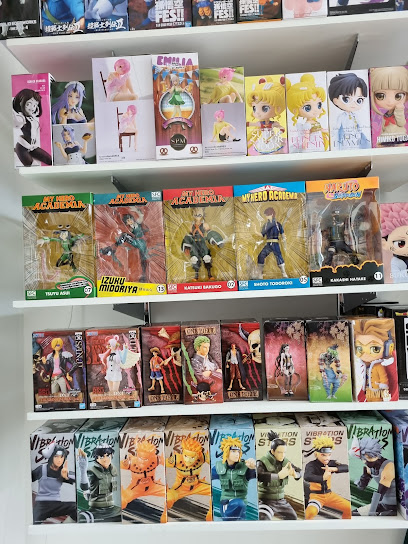
Cibeles Fashion Shop Santa Ana
Explore the vibrant styles of Cibeles Fashion Shop in Santa Ana, where local flair meets quality fashion in a delightful shopping experience.

Essential bars & hidden hideouts
Lover's Steak House
Experience culinary excellence at Lover's Steak House in Santa Ana, where every steak is a masterpiece and every meal is a celebration.

Restaurante Rincon Tipico de El Sopón
Discover authentic Salvadoran flavors at Restaurante Rincon Tipico de El Sopón, a cozy gastropub in Santa Ana, perfect for food lovers.
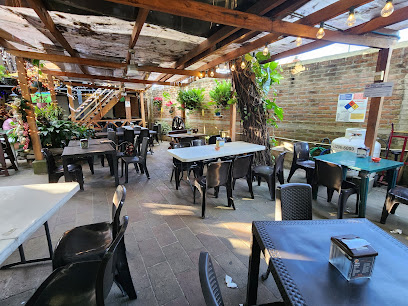
La Taberna del Capitán
Discover the finest seafood at La Taberna del Capitán in Santa Ana, where every dish is a celebration of fresh flavors and local culture.

Atakado
Experience the vibrant flavors of Mexico at Atakado, a top-rated restaurant in Santa Ana, offering authentic dishes and a warm, inviting atmosphere.
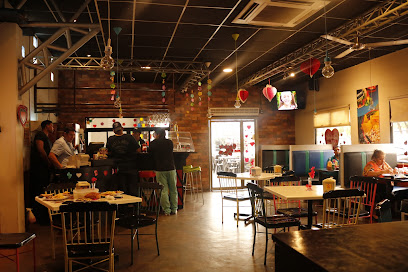
Café Tejas
Discover the flavors of Salvadoran cuisine at Café Tejas, a lively restaurant in Santa Ana featuring live music and a diverse menu for all tastes.
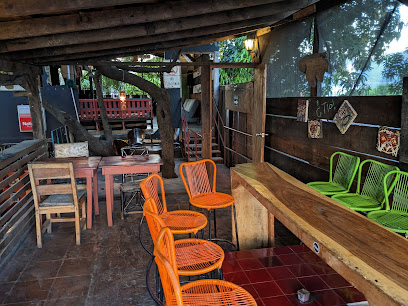
Clubbers Santa Ana
Discover the lively nightlife at Clubbers Santa Ana, where music and camaraderie come together for an unforgettable evening in El Salvador.

Baltimore Pub
Experience the vibrant atmosphere and delicious grill delights at Baltimore Pub, a must-visit bar in Santa Ana, El Salvador.

Tía Juana Restaurant & Bar - TJ Discotec
Experience the vibrant flavors and lively atmosphere at Tía Juana Restaurant & Bar in Santa Ana, a culinary hotspot for all food lovers.

Bambú
Discover the vibrant nightlife of Santa Ana at Bambú, a lively bar offering delicious cocktails and a welcoming atmosphere for all.

EL PATIO.Restaurant.&.Events
Discover the vibrant flavors of El Patio, a bistro and bar in Santa Ana, perfect for memorable dining and special events.
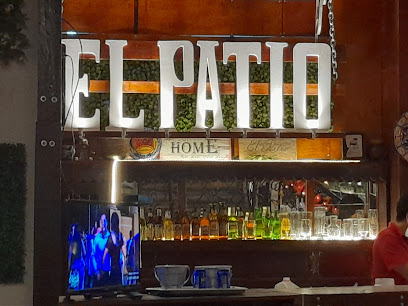
La Verna
Experience the vibrant nightlife of Santa Ana at La Verna, where delicious food meets exciting karaoke in a lively bar atmosphere.

Altamira Gastrobar
Discover Altamira Gastrobar in Santa Ana: A vibrant bar with an extensive beer selection and a charming garden ambiance, perfect for relaxation and social gatherings.

Downtown Pub Santa Ana
Discover the lively Downtown Pub in Santa Ana, a must-visit bar for tourists seeking local flavors and a vibrant nightlife experience.

THE HOUSE D10
Experience the vibrant nightlife at The House D10, Santa Ana's premier bar for relaxation, great drinks, and live entertainment.
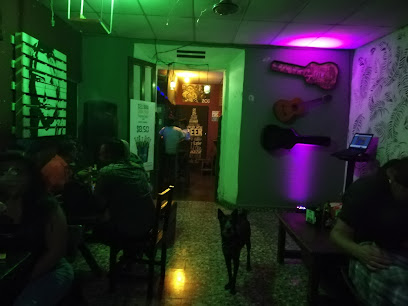
Cervecería La 20 • Santa Ana
Discover the vibrant nightlife of Santa Ana at Cervecería La 20, where local flavors and refreshing drinks unite in an unforgettable bar experience.

Local Phrases
-
- HelloHola
[oh-lah] - GoodbyeAdiós
[ah-dee-ohs] - YesSí
[see] - NoNo
[noh] - Please/You're welcomePor favor/De nada
[por fah-vor/deh nah-dah] - Thank youGracias
[grah-see-ahs] - Excuse me/SorryDisculpe/Perdón
[dee-skool-peh/pehr-dohn] - How are you?¿Cómo estás?
[koh-moh ehs-tahs] - Fine. And you?Bien. ¿Y tú?
[byehn. ee too] - Do you speak English?¿Hablas inglés?
[ah-blahs een-glehs] - I don't understandNo entiendo
[noh ehn-tee-ehn-doh]
- HelloHola
-
- I'd like to see the menu, pleaseMe gustaría ver el menú, por favor
[meh goos-tah-ree-ah behr ehl meh-noo, por fah-vor] - I don't eat meatNo como carne
[noh koh-moh kahr-neh] - Cheers!¡Salud!
[sah-lood] - I would like to pay, pleaseMe gustaría pagar, por favor
[meh goos-tah-ree-ah pah-gahr, por fah-vor]
- I'd like to see the menu, pleaseMe gustaría ver el menú, por favor
-
- Help!¡Ayuda!
[ah-yoo-dah] - Go away!¡Vete!
[veh-teh] - Call the Police!¡Llame a la policía!
[yah-meh ah lah poh-lee-see-ah] - Call a doctor!¡Llame a un doctor!
[yah-meh ah oon dohk-tohr] - I'm lostEstoy perdido
[ehs-toy pehr-dee-doh] - I'm illEstoy enfermo
[ehs-toy ehn-fehr-moh]
- Help!¡Ayuda!
-
- I'd like to buy...Me gustaría comprar...
[meh goos-tah-ree-ah kohm-prahr...] - I'm just lookingSolo estoy mirando
[soh-loh ehs-toy mee-rahn-doh] - How much is it?¿Cuánto cuesta?
[kwan-toh kwehs-tah] - That's too expensiveEso es demasiado caro
[eh-soh ehs deh-mah-see-ah-doh kahr-oh] - Can you lower the price?¿Puede bajar el precio?
[pweh-deh bah-har ehl preh-see-oh]
- I'd like to buy...Me gustaría comprar...
-
- What time is it?¿Qué hora es?
[keh oh-rah ehs] - It's one o'clockEs la una en punto
[ehs lah oo-nah ehn poon-toh] - Half past (10)Media (10)
[meh-dee-ah (diez)] - MorningMañana
[mah-nyah-nah] - AfternoonTarde
[tahr-deh] - EveningNoche
[noh-cheh] - YesterdayAyer
[ah-yehr] - TodayHoy
[oy] - TomorrowMañana
[mah-nyah-nah] - 1Uno
[oo-noh] - 2Dos
[dohs] - 3Tres
[trehs] - 4Cuatro
[kwah-troh] - 5Cinco
[seen-koh] - 6Seis
[says] - 7Siete
[see-eh-teh] - 8Ocho
[oh-choh] - 9Nueve
[nweh-veh] - 10Diez
[dee-ehs]
- What time is it?¿Qué hora es?
-
- Where's a/the...?¿Dónde está...?
[dohn-deh ehs-tah] - What's the address?¿Cuál es la dirección?
[kwal ehs lah dee-rehk-see-ohn] - Can you show me (on the map)?¿Puede mostrarme (en el mapa)?
[pweh-deh mohs-trahr-meh (ehn ehl mah-pah)] - When's the next (bus)?¿Cuándo es el próximo (autobús)?
[kwan-doh ehs ehl proh-ksee-moh (ow-toh-boos)] - A ticket (to ....)Un boleto (a ....)
[oon boh-leh-toh (ah)]
- Where's a/the...?¿Dónde está...?
History of Santa Ana
-
The region of Santa Ana was inhabited by indigenous peoples long before the arrival of the Spanish. The Pipil people, who were part of the larger Nahua civilization, established settlements in the area. Their culture, traditions, and agricultural practices laid the foundation for the region's development.
-
In the early 16th century, Spanish conquistadors led by Pedro de Alvarado arrived in the region. The Spanish established control over the indigenous population and integrated the area into the larger colonial structure of the Captaincy General of Guatemala. The town of Santa Ana was officially founded in the late 16th century, serving as a key administrative center.
-
During the colonial period, Santa Ana grew as an agricultural and trade hub. The fertile lands surrounding the town were ideal for coffee cultivation, which became a significant economic driver. The establishment of haciendas and the labor of indigenous and African slaves were crucial to the town's prosperity.
-
Santa Ana played a role in the independence movement against Spanish rule. In 1821, El Salvador declared its independence, and Santa Ana became part of the newly formed country. The town continued to grow, bolstered by its agricultural productivity and strategic location.
-
In the late 19th and early 20th centuries, Santa Ana experienced significant economic growth due to the coffee boom. The region's coffee plantations produced high-quality beans that were in demand globally. This period saw the construction of many of Santa Ana's iconic buildings, including the Cathedral of Santa Ana and the Santa Ana Theater, reflecting the town's prosperity.
-
The 20th century brought political and social upheaval to El Salvador, and Santa Ana was not immune. The Salvadoran Civil War (1980-1992) had a profound impact on the region, disrupting daily life and causing significant hardships for its residents. Despite the challenges, the people of Santa Ana showed resilience and continued to preserve their cultural heritage.
-
Today, Santa Ana is known for its vibrant culture, historical landmarks, and bustling markets. The city has embraced modernization while retaining its rich historical heritage. Visitors can explore a mix of colonial architecture, modern amenities, and the warm hospitality of its residents. The annual festivities, such as the Fiestas Julias, celebrate Santa Ana's patron saint and showcase the city's enduring traditions.
Santa Ana Essentials
-
Santa Ana is located in the western part of El Salvador. The nearest international airport is Monseñor Óscar Arnulfo Romero International Airport in San Salvador, approximately 65 kilometers away. From San Salvador, you can take a taxi, shuttle service, or rent a car to reach Santa Ana. The journey typically takes around 1.5 to 2 hours by road. Alternatively, public buses operate between San Salvador and Santa Ana, providing a budget-friendly option.
-
Santa Ana offers various transportation options. Local buses and minibuses (microbuses) are commonly used for getting around the city and to nearby areas. Taxis are also available and are relatively inexpensive. Ride-sharing services like Uber are operational in Santa Ana as well. For those who prefer more flexibility, renting a car is an option, though driving can be challenging due to traffic and road conditions.
-
The official currency in El Salvador is the United States Dollar (USD). Credit and debit cards are widely accepted in hotels, restaurants, and larger stores. However, it is advisable to carry some cash, especially for smaller establishments and markets. ATMs are readily available throughout Santa Ana, but it's wise to notify your bank of your travel plans to avoid any issues with card usage.
-
Santa Ana is generally safe for tourists, but standard precautions should be taken. Avoid walking alone at night, especially in unfamiliar or poorly lit areas. Some neighborhoods, such as San Cayetano and San Juan, have higher crime rates and should be avoided. Keep your valuables secure and be cautious of pickpockets in crowded places. Always use reputable taxi services and avoid hitchhiking.
-
In case of an emergency, dial 911 for immediate assistance. Santa Ana has local police stations and medical facilities, including hospitals and clinics. It is recommended to have travel insurance that covers medical emergencies. Pharmacies are available for minor health issues, and many staff members speak basic English. Keep a list of emergency contacts and your country's embassy information handy.
-
Fashion: Do dress modestly, especially when visiting religious sites. Avoid wearing overly revealing clothing. Religion: Do respect local religious customs. Always behave respectfully in churches and during religious ceremonies. Public Transport: Do be courteous and offer your seat to elderly passengers. Don't eat or drink on public buses. Greetings: Do greet people with a handshake. A smile and a polite 'Buenos días' (Good morning) or 'Buenas tardes' (Good afternoon) are appreciated. Eating & Drinking: Do try local dishes and accept food offerings graciously. Don't refuse hospitality, as it is considered impolite.
-
To experience Santa Ana like a local, visit the vibrant central market (Mercado Central) where you can buy fresh produce and traditional Salvadoran goods. Engage with locals, who are often friendly and eager to share stories about their city. Don't miss a visit to the Santa Ana Cathedral and the Teatro de Santa Ana, both iconic landmarks. For a unique experience, explore the nearby Coatepeque Lake, a popular spot for both locals and tourists.
Trending Landmark in Santa Ana
-
Parque Libertad
-
Tazumal Archaeological Park
-
Catedral de Nuestra Señora Santa Ana
-
Parque Arqueológico San Andrés
-
Casa Blanca Archaeological Site
-
Santa Ana Volcano
-
Remfort Hotel
-
Iglesia El calvario
-
Pool House: Santa Ana Hostel
-
Old Art School
-
Finca La Esperanza Coffee Tour
-
Castillo Embrujado- Necrotour Santaneco
-
Hacienda El Gavilán
-
Monumento Nuestra Señora Santa Ana
-
Ex casa de José Pedro Escalón
Nearby Cities to Santa Ana
-
Things To Do in Chalchuapa
-
Things To Do in San Salvador
-
Things To Do in Suchitoto
-
Things To Do in La Libertad
-
Things To Do in Copán Ruinas
-
Things To Do in Santa Rosa de Copán
-
Things To Do in Guatemala City
-
Things To Do in Gracias
-
Things To Do in Antigua Guatemala
-
Things To Do in San Miguel
-
Things To Do in Panajachel
-
Things To Do in Lake Atitlán
-
Things To Do in Chichicastenango
-
Things To Do in Rio Dulce
-
Things To Do in Puerto Barrios












